- Home
- Winston Groom
1942: The Year That Tried Men's Souls Page 13
1942: The Year That Tried Men's Souls Read online
Page 13
The instant word flashed from Pearl Harbor that the Japanese had begun the war (it was then Monday, December 8, on Wake, since it was across the international date line), Devereux knew pretty much what to expect next. He sounded general quarters and within half an hour all his gun positions up and down the island were manned. A China Clipper that had taken off at sunrise for Guam got word and returned to Wake, and since the marine fighters were only short-range planes, the captain of the Clipper agreed to fly a hundred-mile-distant patrol for 360 degrees around Wake. Then, within two hours, the unexpected happened. Since there was no radar, the defenders of Wake had to rely on sight and sound to detect approaching enemy aircraft, which failed them. The crash of surf on the coral rocks and a fast-moving rain squall conspired to allow the Japanese to swoop down with three squadrons of thirty-six medium-range bombers from their mandates in the Marshall Islands, about six hundred miles to the south. The bombers came in so low and so fast that the Americans were taken completely by surprise.
Seven of the twelve Grummans of Marine Fighter Squadron 211 were destroyed in a matter of seconds as they waited on the runway for takeoff or service. Others were damaged. Several marine pilots were killed rushing to their planes. The Japanese bombed the hospital and the Pan Am hotel, killing eleven civilians. Before leaving they shot up the big China Clipper that was floating in the lagoon; then, to the mortification of every American, civilian or military—they could actually see them, they were flying so low—the Japanese pilots waved and grinned out of their open cockpits and wagged their wings in triumph before heading home. The whole thing had taken less than ten minutes and Wake was a shambles. No Japanese planes were lost. Twenty-three marines on the airstrip, plus the eleven civilians, lay dead or dying, with others injured.5 The only good news was that the riddled China Clipper was able to load up with civilians and make it to Midway, a thousand miles back toward Pearl.
Next morning the Japanese returned to finish the job. Fifty-five civilians were killed and seven military personnel. This time, however, two of the remaining three marine fighters were in the air and shot down one of the bombers, while fire from Devereux’s antiaircraft batteries shot down another. Wisely, Devereux had calculated that the Japanese on the raid the day before would have located the positions of his batteries and be gunning for them, so he had all of them moved to different places, some as far as six hundred yards away—a stupendous task, considering that the guns weighed eight tons each. Next day, the tenth, the Japanese came back but, aside from blowing up several “dummy guns” (big pieces of timber) that Devereux had cagily contrived to leave in the place of his real ones, exploding a dynamite dump, and killing one marine, little damage was done. Two more Japanese bombers were shot down by the three remaining U.S. fighters.
Most of the civilian construction workers ran off into the bushes when the first bomb fell, not to return until it was over. But others stayed and helped, most notably a big former football star from the University of Washington, Dan Teters, who was the supervisor of construction on Wake. He organized the remaining civilians into groups and work parties, digging air-raid shelters, helping man the coast guns, filling sandbags, and hauling ammunition, food, and hot coffee to the marines at their posts around the Island.6
At three A.M. on December 11, Devereux was awakened in his command post dugout by a phone call reporting movement offshore. He got up and, with one of his runners, walked to the beach. He studied the seemingly empty sea through his wide night-vision binoculars and was about to return to the CP when his heart caught up.
“Well,” he said, “there they are.” A line of ships stretched across the horizon from south to east. “We knew there was no American task force anywhere near Wake Island.”7
Devereux ordered everyone to prepare to repel an invasion and added, very wisely, “Hold your fire until I give the word.”
Two hours passed before the first faint glow of dawn appeared in the east. The Japanese invasion fleet consisted of three light cruisers, six destroyers, and a number of troop transports for the landing force. At five A.M. the Japanese cruisers opened fire but did little damage. Devereux realized that the cruisers, with their six-inch guns, outmatched in range the five-inch guns he had in his batteries and could, if they wished, simply stand offshore and pound the Wake defenses into rubble without risking damage to themselves.
The Japanese did not do this, however. After the first salvos, the Japanese cruisers hauled along with the destroyers and transport ships toward shore, evidently thinking, as Devereux hoped they would, that the previous days’ aerial bombing had knocked out all his guns. The men manning the American artillery were itching to fire, but Devereux repeated his order to wait until he said so. The Japanese force was within a mile of shore when Devereux gave the order at 6:10 A.M.
The American batteries opened up. The first salvo missed but the second caught the Yubari—which was the Japanese commanding admiral’s flagship—amidships and it began to belch smoke and steam. The cruiser slowed and began to veer “crazily” as the marines furiously fed shells into their five-inch guns. Two more salvos struck home before the ship managed to “limp over the horizon,” according to Devereux, carrying the Japanese admiral with her. Meanwhile, U.S. fire blasted one of the destroyers accompanying the troop transports. It simply exploded, broke in half, and sank with all hands in less than two minutes.
All the Japanese warships were now firing wildly when the shore batteries turned their attention to another destroyer and blew her stern off; in addition they blasted one of the troop transports and it sank without a trace. Another one followed her down in short order. Some of the civilian construction workers made themselves useful by hauling ammunition from the magazines to the guns, freeing the marines to man the batteries.
Another cruiser was hit and wobbled off out of range in a smoke screen it had laid. Now all four remaining Grumman Wildcats got into the act. (Marine mechanics had managed to patch up two more of the Wildcats that had been damaged in the first day’s air attack.) They had gotten off the ground when the battle began and one of them, flown by Captain “Hammering Hank” Elrod, put a bomb in another Japanese destroyer before his plane was totally riddled by antiaircraft fire from the stricken ship. Right behind him, a second pilot came in for a run when, as he reported later, “As I prepared to bomb this ship, it blew up and sank.”
Captain Elrod somehow managed to crash-land his plane on the beach, but it was a total loss, and he kept apologizing, as if it were his fault, for not bringing it in safely. Meanwhile, the Japanese decided to retire and try again when conditions were more favorable. More than five hundred Japanese had been lost.
It was a fine day for the United States Marines and they were justifiably proud. When Devereux reported the action to Pearl Harbor the people there were elated. Finally there was some kind of victory. It was also reported that when Devereux was asked if there was anything he needed, he replied, “Send us more Japs.” It was a great line, and it was broadcast and printed all over America and gave the American people a lift they sorely needed. Problem was, it wasn’t true, as Devereux himself said after the war: “I would not have been damned fool enough to send such an idiotic message.”
Nevertheless, Americans ate it up. They tuned in breathlessly each evening as broadcasters began referring to the defenders of Wake as “the gallant little band” or “the heroic band,” and “Send us more Japs” was played up prominently—all of which was received via shortwave radio by the men on Wake, who generally hooted at it; they knew the Japanese weren’t finished with them. One of the network commentators described Wake Island as the Alamo of the Pacific. This, according to Devereux, “caused the marines to use bad language ... Even Private Joe Blow knew enough history to know what happened at the Alamo, and he didn’t like the idea.”*8
Meanwhile, back at Pearl Harbor there was much teeth-gnashing about what, if anything, could be done to relieve Wake Island. Admiral Kimmel, who was still in charge during the first Wa
ke attack, had immediately organized a relief force and set it into motion. Then word came that Navy Secretary Knox, with Roosevelt’s approval, had fired Kimmel and that effective immediately Admiral Pye would take his place. Pye went ahead with Kimmel’s relief expedition for Wake, built around the carrier Saratoga, which had raced back across the Pacific from the West Coast at the first news of war. Task Force 14 would consist of Sara, as well as a cruiser division commanded by Admiral Frank Jack Fletcher, who would direct the operation. An accompanying transport contained a reinforcement battalion of marines and replacement supplies. This force sailed from Pearl on December 16.
On Wake the situation was becoming desperate. Following the marines’ successful defense of the Wake beaches, the island was nevertheless bombed almost daily from the Japanese Marshall Islands, slowly demolishing the fortifications and even the inroads of civilization itself: Devereux’s artillery was destroyed; his repair shops were put out of action; and his men were being worn down by the constant strain. On December 21 the two carriers that had peeled off from Nagumo’s Pearl Harbor strike force on its way home to Japan had arrived off Wake to add their power to the fray. They shot down the two remaining Grumman Wildcats. What was left of the marine aviation section joined Devereux as combat infantrymen.
Late at night on December 22 Devereux and others who had been anxiously watching out to sea for the relief expedition saw flashes of light in the northwest. They did not know what to make of this, but assumed it must be their salvation. It was not. It was the Japanese, come to invade them yet again and with a much larger force; Fletcher’s Task Force 14 was still some five hundred miles away, owing to difficulties of refueling at sea, as well as conflicting orders from Pye’s headquarters in Hawaii. Back in Washington Admiral Stark had concluded that Wake could not be held and it might be best to let Task Force 14 simply evacuate everybody there. Pye, still shaken from the disaster at Pearl Harbor, was reluctant to risk his force, especially since nobody knew the whereabouts of Nagumo’s colossal fleet following its attack on Pearl Harbor. He radioed Fletcher to detach a seaplane tender to Wake, unescorted, to evacuate the civilians and marines. No sooner had Fletcher received this perplexing message than Pye countermanded his own order. Whatever information they had back at Pearl Harbor, they didn’t seem very decisive about acting on it, was Fletcher’s reaction.
Just past midnight, now December 23, the Japanese began landing troops on beaches all over the island, outnumbering the marines three to one. From Japan, Radio Tokyo aired a broadcast from Tokyo Rose that lamented, “Where, oh where, is the United States Navy?” The people on Wake were wondering the same thing.*
Devereux was now in a bad fix. It was still dark and most of his searchlights had been destroyed by Japanese bombing. He knew the enemy was landing because of various reports from his batteries and strong points, but not exactly where. He would have to wait until sunrise for the situation to clarify itself.
All through the early hours the Japanese relentlessly staged night attacks against the American positions. At one point a civilian worker lurched into Devereux’s headquarters and shrieked, “They’re killing them all!” He said he had seen the Japanese taking the airstrip and that they were bayoneting the marines who had manned the machine guns. This sort of thing went on until dawn—desperate radio reports of Japanese crawling up on marine positions, and then the radio would go dead.9
Commander Winfield Scott Cunningham was the senior officer present on Wake, but he commanded nothing but a headquarters office—Devereux had the marine force under his own control. Nevertheless, Cunningham was ostensibly in charge. It was just after sunrise when, acting on reports from Devereux, Cunningham composed a message to Pearl Harbor: “Enemy on Island—Issue in Doubt.”
This news was received with dismay by Admiral Pye and his staff. Fletcher’s task force was still nearly a day away to the east. They all agreed it was probably too late either to save Wake or to evacuate it. The question then became whether or not they should tell Fletcher to keep steaming and try to engage the Japanese fleet. In the end, Pye decided no; he was unwilling to risk one of his only three carriers and her supporting force against an enemy of undetermined strength.
When this word was received aboard Saratoga there was fierce consternation and anger. Fletcher’s staff argued that he should just ignore the orders and keep on going. The marine pilots were especially distressed, since they well knew what would happen to their fellow marines on Wake if it was abandoned to the Japanese. Many cursed, some wept, but Fletcher ordered Task Force 14 to come about and retire to Pearl Harbor, a bitter pill to swallow.10
Meanwhile on the island, despite fierce marine opposition and many individual acts of bravery, it was becoming apparent that organized resistance would not be possible much longer. Sunrise had revealed Japanese flags flapping in the breeze all over the island, marking Japanese positions for their own inevitable air strikes. Offshore lay a fleet of twenty-one Japanese ships. About seven-thirty A.M. Cunningham sent out word that Task Force 14 would not be coming after all and Devereux replied that he was going to try to consolidate his troops for one last stand. Cunningham, however, had concluded that surrender was the only option lest they all be killed, and as island commander he was responsible for all the civilians.
Devereux was both furious and heartbroken but he understood. He gave orders for his men to destroy their weapons and raise white flags. Commander Cunningham suddenly appeared, having changed into his formal blue navy uniform, and the two of them began walking toward the Japanese positions with a sergeant carrying a white rag tied to the tip of a mop. The first Japanese they encountered was a very junior officer who as luck would have it spoke broken English. When Devereux told him they were surrendering, the Japanese officer gave him a cigarette and cheerfully informed the Americans that he had attended the San Francisco World’s Fair in 1939.
For the next several hours Devereux and Cunningham walked around Wake under Japanese escort shouting out for the marines to surrender, in case they hadn’t already gotten the word. Unnerving incidents occurred, one in particular when the surrender party approached the main headquarters and saw a Japanese soldier hauling down the big American flag. In some bushes nearby was a marine sergeant who did not know of the surrender and had drawn a bead on the Japanese with a machine gun. He was just about to pull the trigger when he heard Devereux’s shouting. If he had fired, no telling what would have happened.11
When the surrender was complete Devereux and Cunningham were taken to the Japanese commander’s headquarters. One of the first things the commander demanded to know was, “Where are the women’s quarters!” Told that there were no women on Wake, he refused to believe it and threw Cunningham, Devereux, and the other officers into a cramped prison building. For the next two and a half weeks the marines and navy personnel as well as the civilians were subjected to unpleasant but tolerable treatment by their captors. The enlisted men had been stripped to their underwear, trussed up tightly with telephone wire, and marched into a dark, sweltering blockhouse. On January 12 the Japanese began shipping out the Americans, civilians and military alike, to various prison camps, where their treatment grew progressively worse: beatings, starvation, neglect.*
Devereux and Cunningham and most of the marines were sent to a prison camp near the Japanese occupied city of Shanghai, China. There they met up with a U.S. Navy commander named Columbus Darwin Smith, who had been captain of the navy gunboat Wake on the old Yangtze River patrol before the Japanese seized it and made him a prisoner. The Wake Island prisoners and the former skipper of the Wake decided on the spot that “Wake” must be an unlucky name.
Smith was an unusual character in a war filled with unusual characters. To begin with, he had the dubious distinction of being the first American taken prisoner by the Japanese, since they had seized him on the Shanghai docks within minutes of the Pearl Harbor attack. How he came to Shanghai and got to be a commander in the U.S. Navy was also unusual. The son of a promin
ent Atlanta physician, Smith had run away at age sixteen to become a merchant seaman and in 1906 found himself running a watermelon schooner from Tampa to Key West. He was still making the run eleven years later when America entered the First World War. He was commissioned a naval lieutenant and assigned to a sub chaser fighting the Austrian navy in the Mediterranean, where he became a convert of steam over sail and for the next ten years captained ships of various shapes and sizes. In 1929 he heard about a high-paying job skippering river boats on the Yangtze and made a decision that would land him smack in the beginning of World War II.
At age fifty-one Smith had become an old China hand. He knew the Yangtze upstream and down for thousands of miles and had become a fixture around Shanghai, which was home to a number of American and British corporations doing business in China. In 1937, following the Rape of Nanking, the war between the Japanese and Chinese had spread to Shanghai, and the Japanese were bombing the helpless city. Smith was there for the sinking of the Panay but managed to maintain friendships with many Japanese army and navy officers.*
In March of 1941, nine months before Pearl Harbor, Smith was asked to accept a new commission in the U.S. Navy and skipper the Wake, which he did, making him the ranking U.S. Navy officer in China. Actually, the Wake was less a gunboat than a clandestine floating radio spy ship, used to keep track of Japanese movements. The day before the Pearl Harbor attack a Japanese officer of Smith’s acquaintance phoned Smith to inquire where he would be next morning. Smith replied that he would be on the Wake, whereupon the Japanese informed Smith that he had several turkeys with which he wished to make Smith and his crew a gift, and that he would have them delivered next morning. Before this kindness could be transacted, however, Smith received news from his quartermaster on the radio-ladened Wake telling him of the Pearl Harbor attack. Smith rushed to his ship to find it under Japanese guard.†

 El Paso
El Paso Better Times Than These
Better Times Than These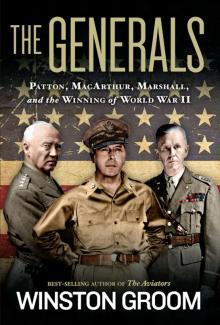 The Generals
The Generals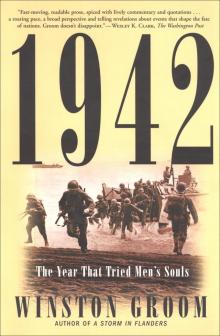 1942: The Year That Tried Men's Souls
1942: The Year That Tried Men's Souls Forrest Gump
Forrest Gump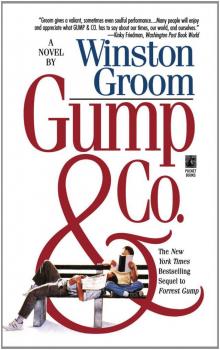 Gump and Co.
Gump and Co.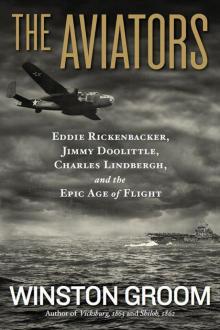 The Aviators
The Aviators Shrouds of Glory
Shrouds of Glory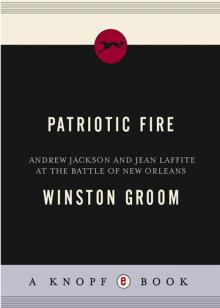 Patriotic Fire
Patriotic Fire Kearny's March
Kearny's March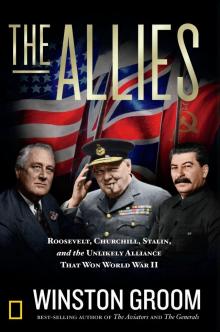 The Allies
The Allies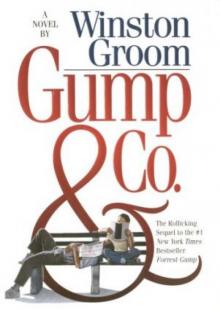 Gump & Company fg-2
Gump & Company fg-2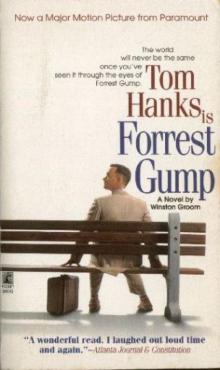 Forrest Gump fg-1
Forrest Gump fg-1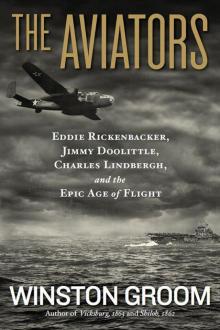 The Aviators: Eddie Rickenbacker, Jimmy Doolittle, Charles Lindbergh, and the Epic Age of Flight
The Aviators: Eddie Rickenbacker, Jimmy Doolittle, Charles Lindbergh, and the Epic Age of Flight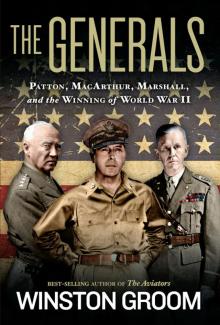 The Generals: Patton, MacArthur, Marshall, and the Winning of World War II
The Generals: Patton, MacArthur, Marshall, and the Winning of World War II